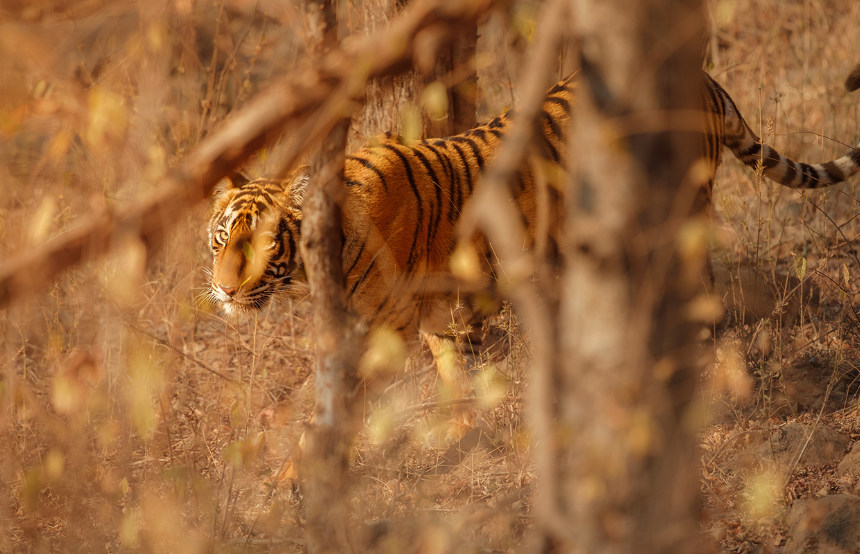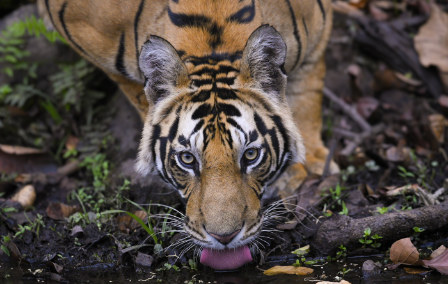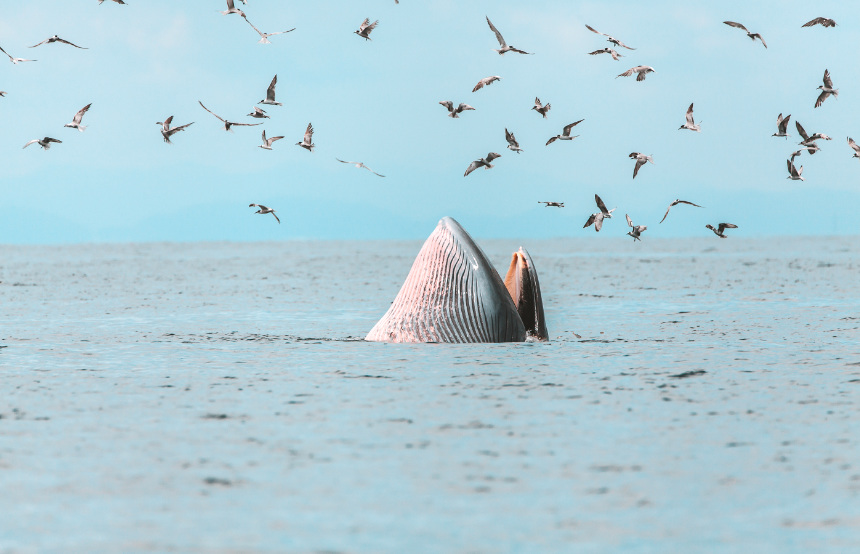Published 28th May. 2025
Reading time
Found exclusively on the islands of Borneo and Sumatra, orangutans are some of nature’s most elusive animals. Although they’re sadly classed as critically endangered, spotting these beautiful orange apes in the wild is thankfully still possible. From lush Bornean rainforests to winding jungle rivers, we’ve handpicked some of the best places to see orangutans where they truly belong. As our Asia specialist, Holly, puts it: ‘Nothing can match the thrill of seeing such an amazing creature in the wild... For such powerful creatures, their demeanour is so gentle – it's such a privilege to see one with your own eyes.’ Read on to find out more…
Located in Indonesian Borneo, Tanjung Puting National Park is one of the best places to see orangutans in the wild – and you can do it by boat. Spend two to four days onboard a traditional klotok, cruising between feeding platforms to spot tufts of tangerine fur peeking from the foliage. The park is home to an estimated 4,000 orangutans, including some that have been rescued and rehabilitated, making the chances of sightings excitingly high.
Best time to visit: June to September, during the dry season when wildlife is easier to spot and river conditions are favourable.

Image by Getty Images.
Danum Valley is a 140-million-year-old rainforest paradise located in Sabah, Malaysian Borneo. This protected reserve is home to an estimated 500 wild Bornean orangutans, with suspended walking trails weaving through the treetop canopy where the orange apes love to lurk.
As with many natural settings, orangutan sightings here aren’t guaranteed. However, with around 120 species of mammals, over 300 species of birds, 75 species of reptiles and 56 species of amphibians, a trip here will win you over with wildlife, orangutan or not.
Best time to visit: March to October, especially in the drier months of May to September, for better hiking conditions and wildlife sightings.

Image by Getty Images.
Sumatra’s Gunung Leuser National Park is one of the best – and last – places to see Sumatran orangutans in the world. Meet semi-wild orangutans during a six-to-seven-hour trek from Bukit Lawang, a former rehabilitation centre. These curious creatures have become accustomed to humans, so your chances of spotting them are higher than with truly wild orangutans. Our Asia specialist, Holly, was lucky enough to see them for herself: ‘In Bukit Lawang, orangutans often come down to the river to drink, making sightings relatively common.’
Want to trek deeper into the forest? Take on a multi-day hike and you might just stumble upon wild orangutans along with tigers, elephants and clouded leopards. To make your experience as ethical as possible, ensure you choose a reputable guide, maintain distance and never attempt to feed them.
Best time to visit: June to September, the dry season, when trekking is easier and orangutans are more active.

Image by Getty Images.
If you’re still wondering where to see orangutans, look no further than the Kinabatangan Wetlands in Sabah. Join a guided boat safari, wind down the Kinabatangan River (the longest in Sabah) and keep your eyes peeled for orangutans feeding on fruit trees overhanging the water.
Best time to visit: March to October, when the dry season offers better chances of spotting wildlife.

Image by Getty Images.
Written by Evie Buller | Header Image by Getty Images.
Practical advice and inspiration for your next trip

Searching for the best safaris in India? We’ve got you covered. Whether you’re keen to track tigers in Madhya Pradesh, admire Asiatic lions in Gujarat or photograph forest eagle owls in Kerala, your India holiday awaits. While Bengal tigers steal the limelight in Bandhavgarh National Park, don’t forget about the shaggy sloth bears (though they’re not as cuddly as they look). Feeling up for the adventure?
15th September 2025 - India Safari & Wildlife

With their sleek, tangerine-tinged coats, piercing eyes and commanding presence, nothing beats the thrill of seeing a tiger in the wild. And where better than in India, home to the largest population on Earth? But when it comes to the best time to see tigers in India, it all depends on what you want from your trip. Whether you’d rather vivid green landscapes or crowd-free safaris, we’ve got the insider intel on when to see India’s famous big cats.
23rd June 2025 - India Safari & Wildlife

Where are the best places for whale watching? We’re glad you asked. From the picturesque Icelandic town of Husavik to the coastal haven of Mirissa in Sri Lanka, there are plenty of destinations to marvel at these majestic creatures. Picture this: the air is still and all you can hear is the creaking of the catamaran and the odd, excited whisper. You scan the horizon, desperate to spot the tip of a fluke or a distant plume of whale breath.
16th June 2025 - Safari & Wildlife

Our team of destination experts will get to know you and your unique requirements for your holiday

We work with you to build an ultra-personalised holiday itinerary with your choice of accommodation, experiences and activities

All of our holidays include little extras designed to make a big difference to your trip, from fast-tracking you through airport check-in and security to our network of local Concierges